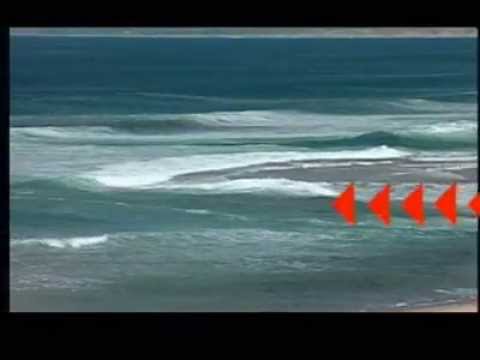According to the United States Lifesaving Association, rip currents are the No. 1 safety threat at surf beaches and are associated with about 100 deaths from drowning each year.
Truly, this is a tragedy because rip currents don’t kill, panic does.
To save lives, the nation’s 33 Sea Grant programs and NOAA designate the first full week of every June as “Rip Current Awareness Week.”
Before summer gears up, we want to remind you how to stay beach safe and avoid rip currents. We also want to teach you what to do if you are caught in one of these powerful, seaward-flowing currents.
Our public education campaign, a partnership with the United States Lifesaving Association (USLA) and the National Weather Service, is called “Break the Grip of the Rip,” but it is largely about teaching you to remain calm and relaxed if you find yourself fighting the ocean.
You won’t win. Some strong rip currents have been clocked at 8 feet per second, faster than an Olympic swimmer in a sprint race. Drowning from exhaustion is a leading reason people die in rip currents.
Californians have extra reason to be beach savvy, as we have a high wave energy coastline and lots of beach visitors. Along with Florida and the Carolinas, we are among the four states with the most drowning victims annually. But, there is no reason to be a victim.
Here are some basic safety principles that will make you and your family safe.
1) Don’t get in the ocean if you are not a strong swimmer. The ocean does not have an off button and it’s not a gigantic swimming pool. If you are in doubt, don’t go out.
2) Swim in areas where there are lifeguards and swim with a buddy. You can also talk to lifeguards about the day’s surf conditions. Your chances of drowning at a beach protected by lifeguards affiliated with USLA is 1 in 18 million.
3) The best beaches for children are wide, flat, protected sandy beaches with little exposure to swells. Avoid swimming near jetties and piers, since these hard structures often set up permanent rip currents. Steeply sloped beaches or beaches with high surf are also to be avoided, as rip currents are usually stronger when the surf is big.
Learn how to spot a rip current. Robert Anthony Dalrymple, a coastal engineer at Johns Hopkins University, says there are more than 21 different ways for a rip current to develop. One of the most common occurs when waves and winds pile water up onto the beach and water runs off the beach through channels.
You can (sometimes) spot a rip current by looking for churning choppy water, a line of foam or debris moving out to sea or water with a noticeably different, often darker, color.
Calm water can be deceiving, since rip currents often form in deeper channels between areas of breaking waves. Look for a break in the incoming wave pattern.
What to do if you are caught in a rip? Don’t fight the current. Don’t panic. Lifeguards say to think of a rip current as a treadmill that you can’t turn off. You want to step to the side of it by swimming parallel to shore. You can then head back in.
Most rip currents are narrow but some are as wide as 50 yards, so don’t panic if you don’t escape the current right away. If you can’t escape, float or tread water. Stay calm. Very often rip currents set up a circulation pattern that will return you toward shore. If you need help, call or wave for assistance.
Written by Christina S. Johnson
Videos

http://youtu.be/FdGraeVAB18
About California Sea Grant
NOAA’s California Sea Grant College Program funds marine research, education and outreach throughout California. Headquartered at Scripps Institution of Oceanography at the University of California San Diego, California Sea Grant is one of 34 Sea Grant programs in the National Oceanic and Atmospheric Administration (NOAA), U.S. Department of Commerce.